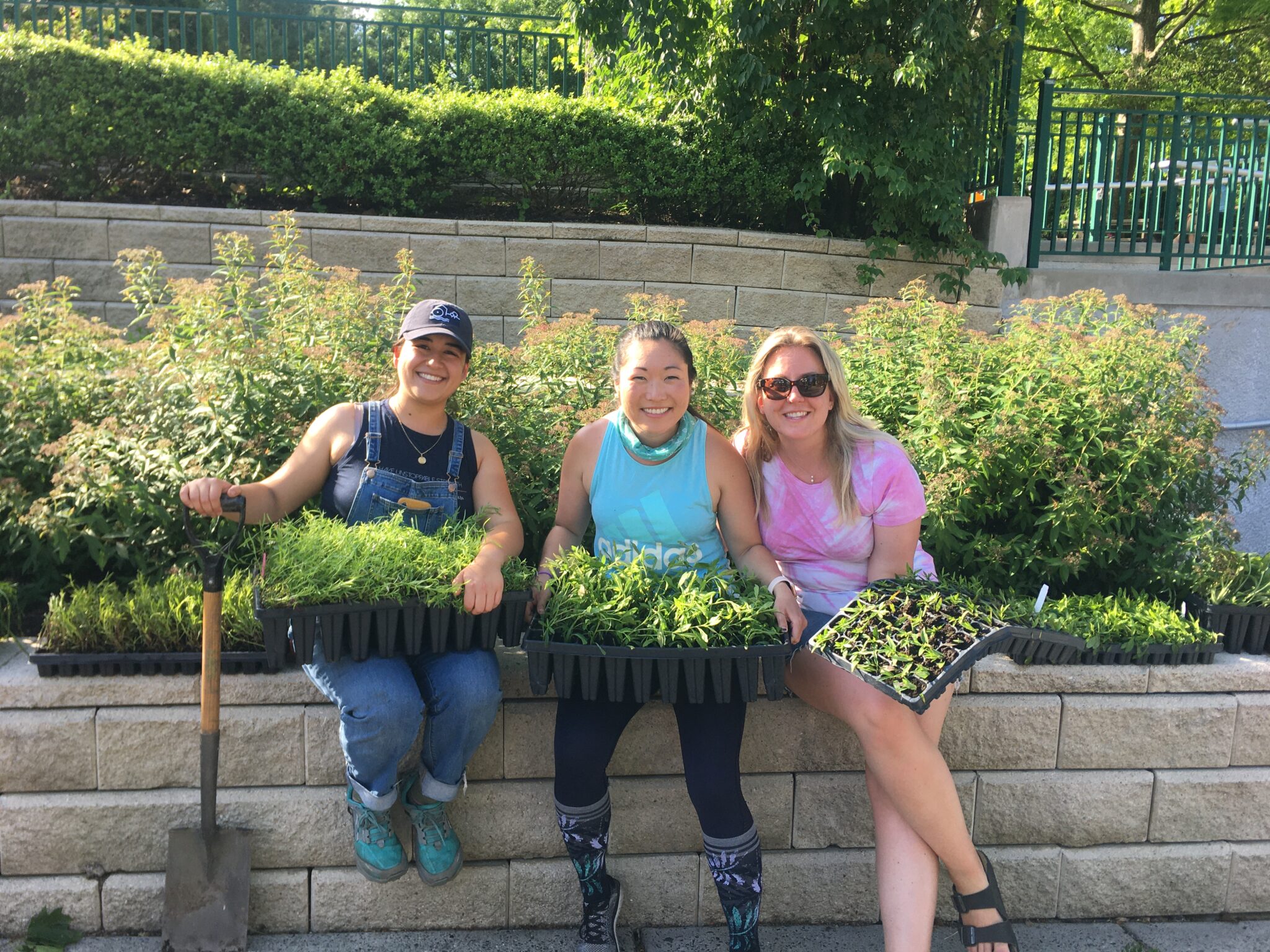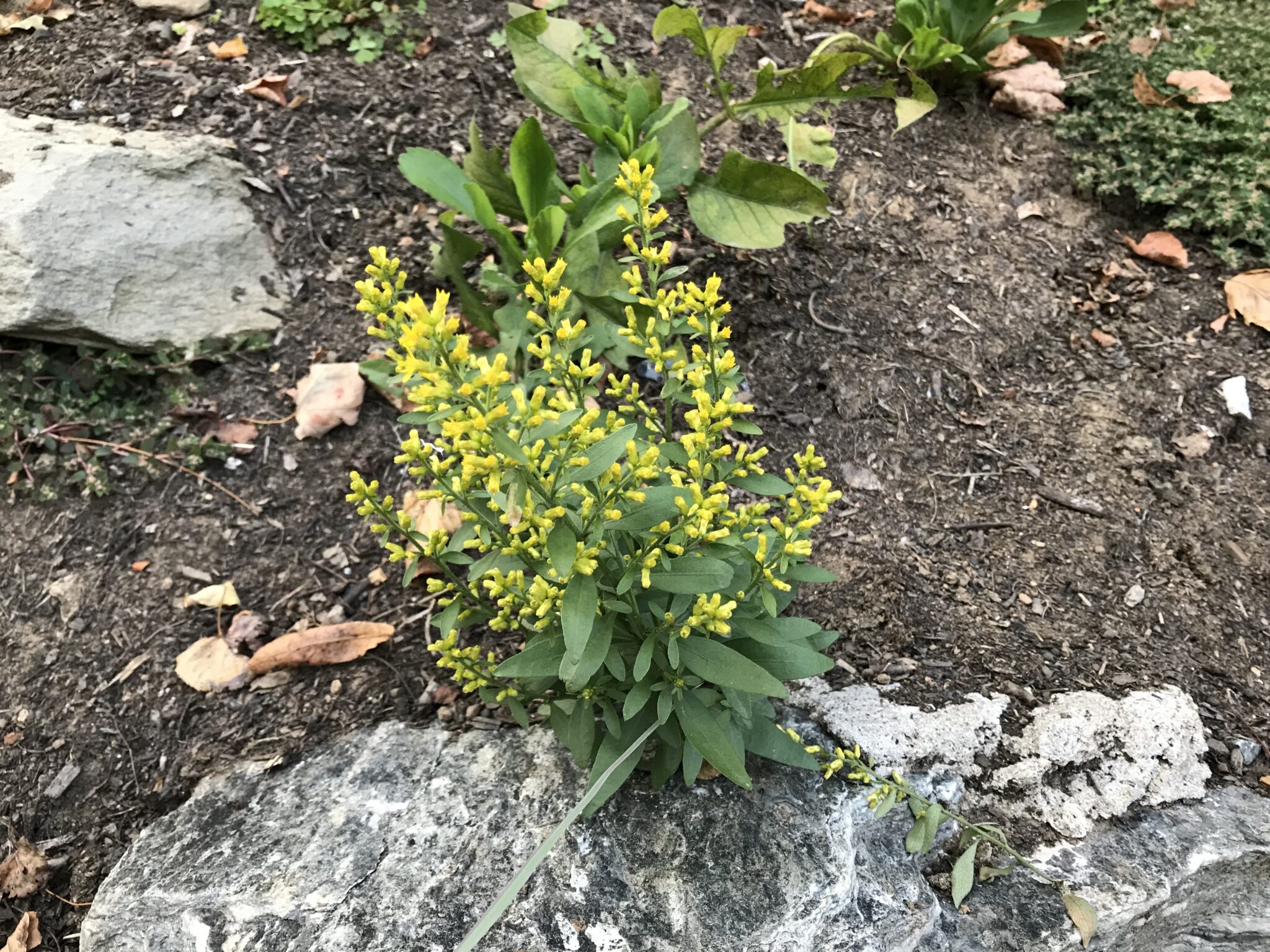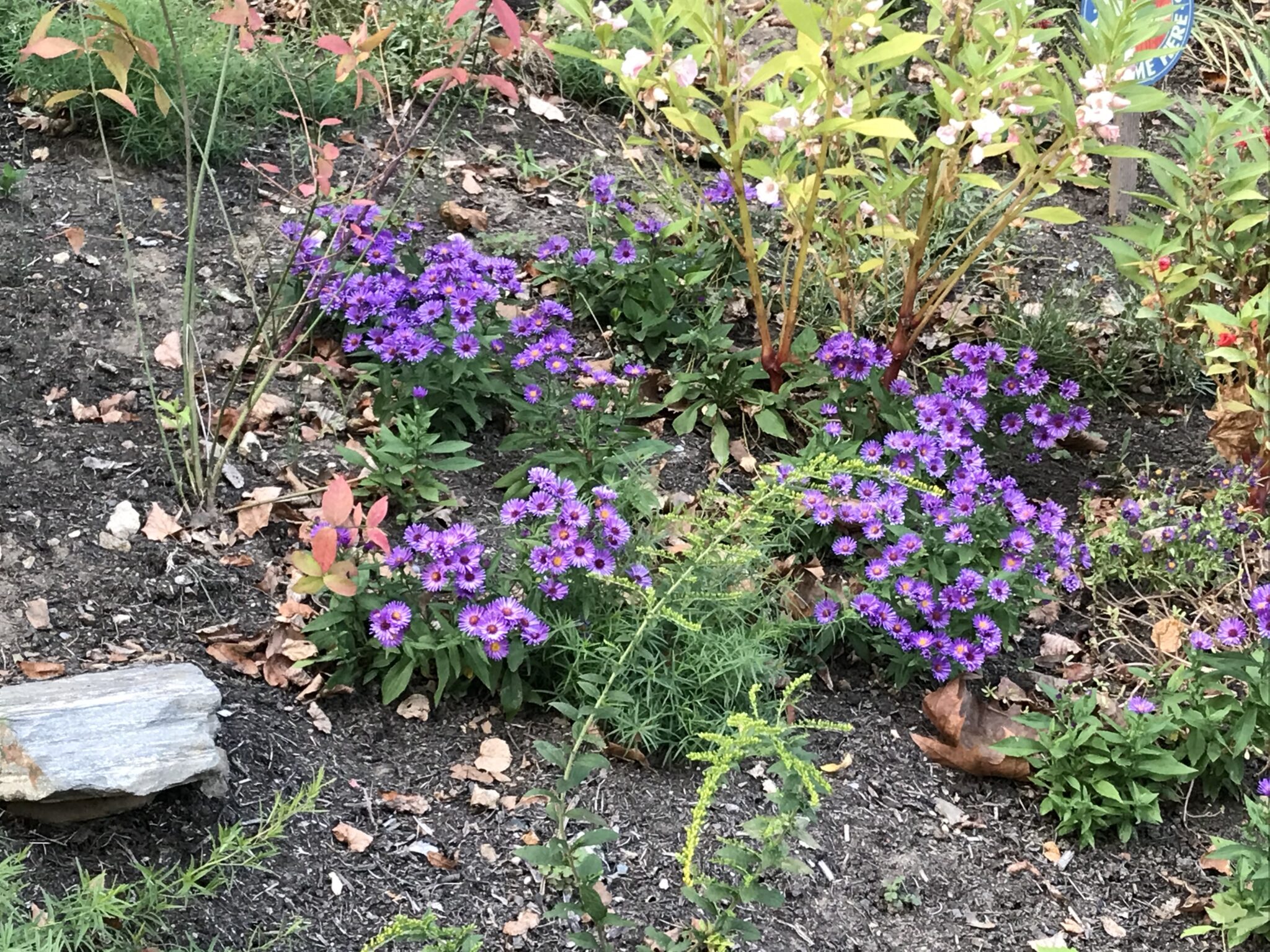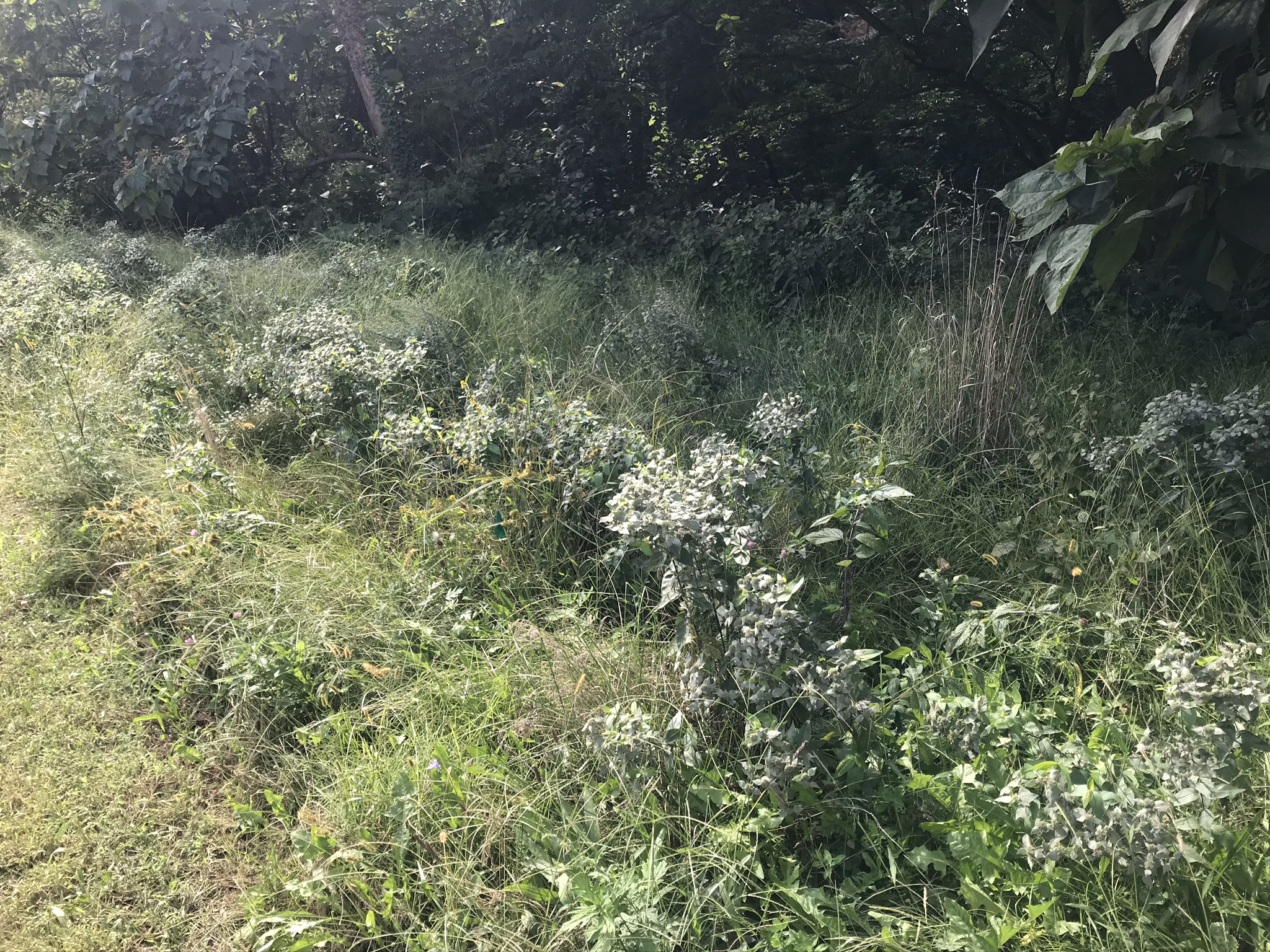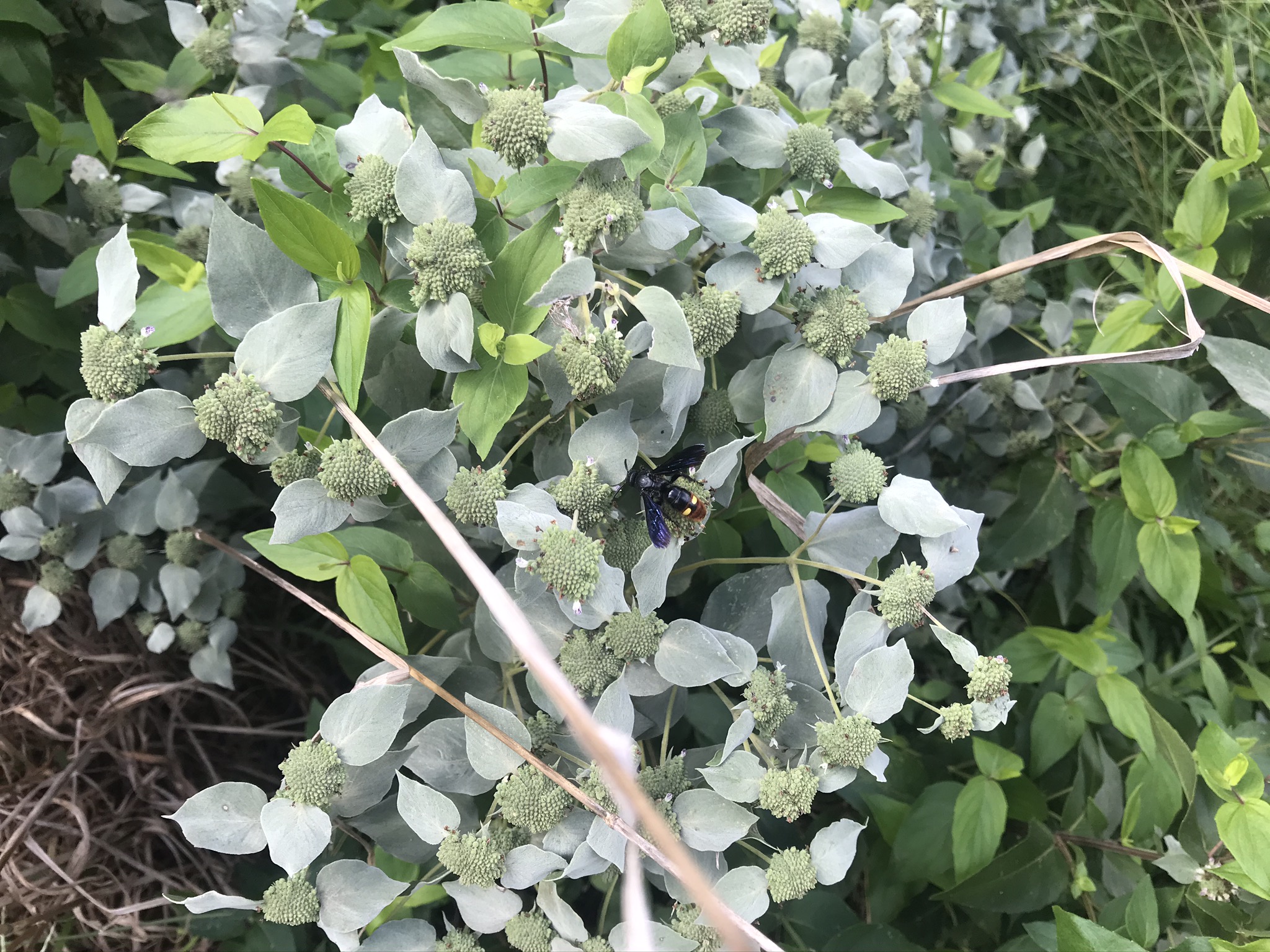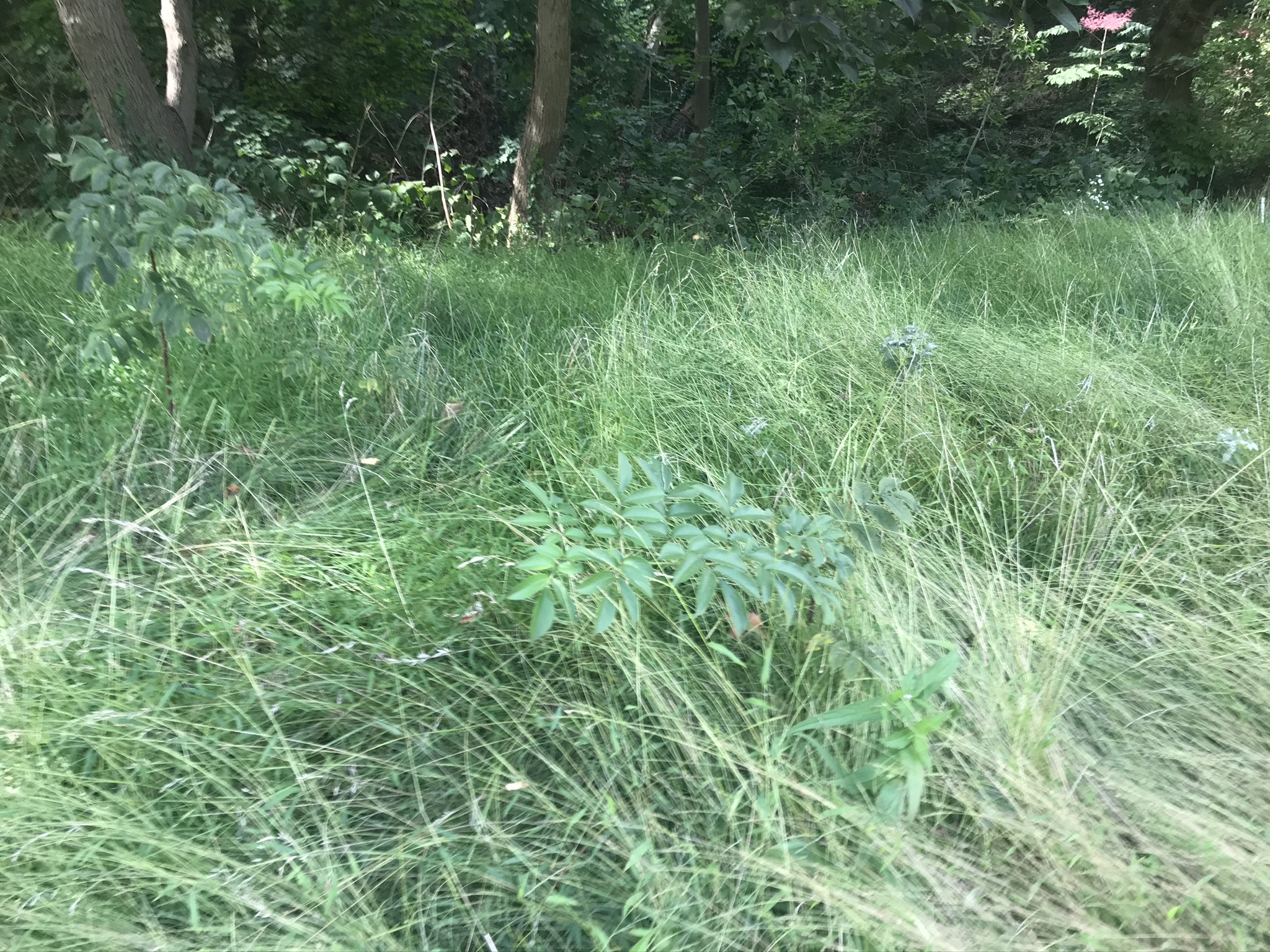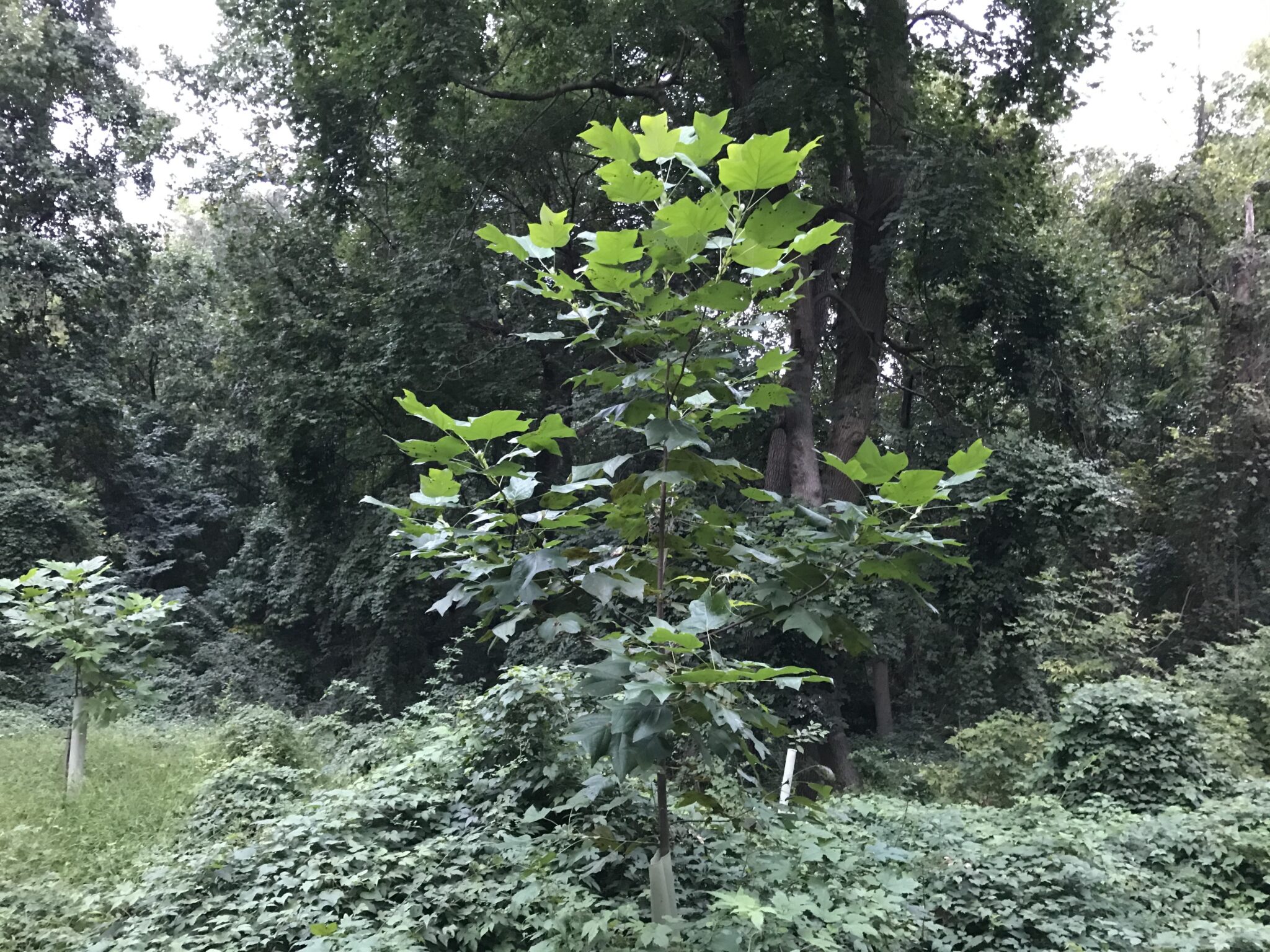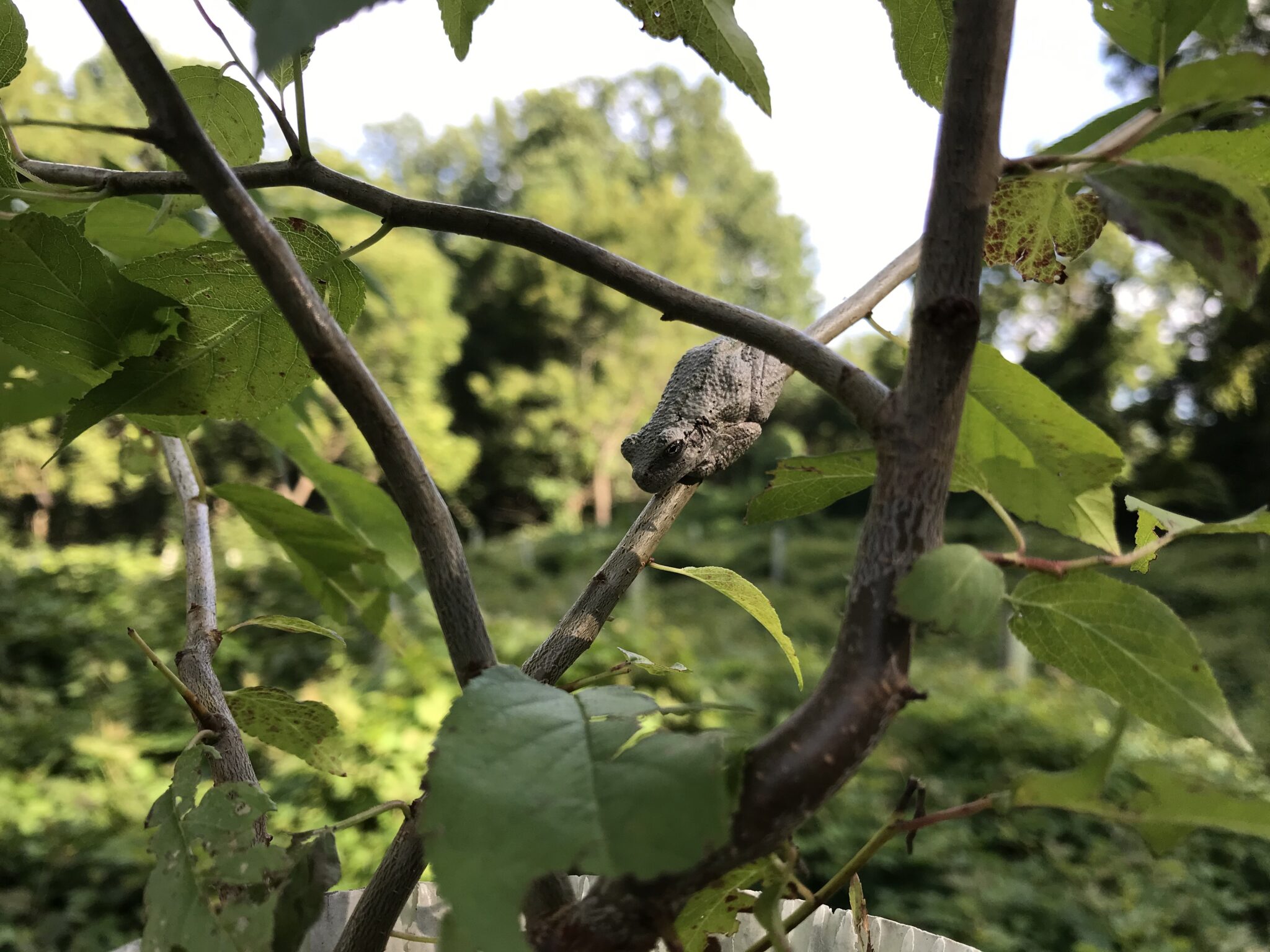When envisioning flooding, backed up inlets and overflowing streams might come to mind. The torrents of water flowing down wide roads, big driveways, and prominent roofs are also easy to picture. Stormwater from all of these areas needs to be addressed to protect our streams. Unfortunately, projects altering streets or driveways to keep water out of storm sewers tend to be expensive. As we line up paths to take on these larger projects, we can address another factor in flooding and stream degradation: landscape neglect.
Large portions of our non-built spaces are planted with turf grass, which has thick, shallow roots that limit stormwater absorption and contribute to flooding. Turf grasses are not native to our region (Kentucky bluegrass is a misnomer) so they do not host wildlife. Other non-native ornamental and invasive plants also often have shallow roots, and some that do have deep-roots do not hold soil the way a native plant would in the same location. With so much of our land devoted to buildings and roads, using what we have left on non-native plants harms wildlife and damages streams. Replanting areas and removing weeds restricting the growth of existing plants are simple, cost-effective ways to support our ecosystem and protect our water.
The Conservancy has worked to help individual residents address stormwater through Stream Smart House Calls, the Delmont Avenue Green Street, and related efforts. We have also partnered with like-minded organizations to re-plant public spaces with more beneficial vegetation. The three projects below are ongoing efforts in public parks. The plants have plenty of growing to do, but we are excited about their progress.
Sabine Park
The Conservancy is working with the Friends of Sabine Park to plant native plants on the Sabine Avenue slope. These slopes are too steep for children to play on and provide no resistance for the water that sheets off the parking lot during storms. New plants create wildlife habitat and slow stormwater. New plants include spiderwort, blue flag iris, new york ironweed, cranberry bush, elderberry, cardinal flower, goldenrod and wild ginger.
The park sits on the perimeter of the Gulley Run watershed. Stormwater flowing off the park pours into a storm drain near the intersection at Montgomery Avenue. Once piped, the water travels along Montgomery Avenue. before being sent the Gulley Run tributary along Woodbine Ave. Gulley Run drains into the Schuylkill River at the end of Rock Hill Road near the Green Lane Bridge. The stream’s proximity to roads throughout its reach make it particularly susceptible to flooding, so reducing the volume of water being piped into the stream lessens the impact of large storms.
Cynwyd Heritage Trail along Vine Creek
In spring 2020, the Conservancy worked with the Friends of the Cynwyd Heritage Trail (FOCHT) to plant native shrubs and perennials along the dirt portion of the trail near Vine Creek. The area had previously been maintained as lawn, providing minimal habitat and limiting stormwater absorption. The new plants – including arrowwood viburnum, sweet pepper bush, ninebark, mountain mint, and goldenrod – serve as host plants to specific pollinators which have evolved to rely on the plants for reproduction and survival. As the plants grow, their deep roots will secure the soil, reducing runoff reaching Vine Creek, and help the site actualize its potential as habitat.
Growth on some of the shrubs was limited due to deer browsing but the overall survival rate was high. The existing grass was left in place and allowed to grow long. While lawn grass and other non-native grasses do not provide much habitat, they are better than bare soil. Removing unwanted plants selectively – rather than clearing large areas with no plan to replant – has been a point of emphasis for the FOCHT this year. This is also a good approach to take at home; unplanted soil covered with mulch or left bare provides no ecological value and is susceptible to erosion.
The Conservancy and the FOCHT will continue partnering in the future. We will be sure to keep you informed as our work progresses.
Rolling Hill Park Trees
Over the past few years we have planted bare root trees in Rolling Hill Park. Rampant vine growth and hungry deer prevent many tree seedlings from growing naturally. As the vines grow, they choke out and take down larger trees, further reducing shade and allowing more vine growth. This cycle has created prominent canopy gaps in the park, where areas that should be wooded have been take over by invasive plants. We plant new trees every year to eventually fill these canopy gaps and help restore the natural ecosystem.
We use young, bare root trees to cover as much ground as possible. We have also had success transplanting young tree seedlings from backyards where they would not have had enough space to grow. The trees are protected with tree tubes, which help deter deer and hold back vines. Tree tubes cause irregular growth patterns in early years but help the trees establish over time. Tubes are kept on until the trunk is too wide to fit inside them because they can help limit deer rubbing.
Donations from individual supporters have made these plantings possible. If you would like to support the planting efforts, consider gifting a tree. Previously planted trees include tulip trees, white oaks, swamp white oaks, chestnut oaks, swamp chestnut oaks, pin oaks, flowering dogwoods, american plums, paw paws, river birches, and hackberries.
